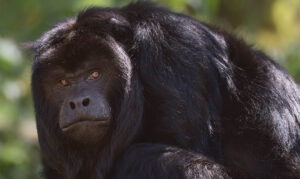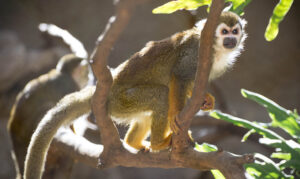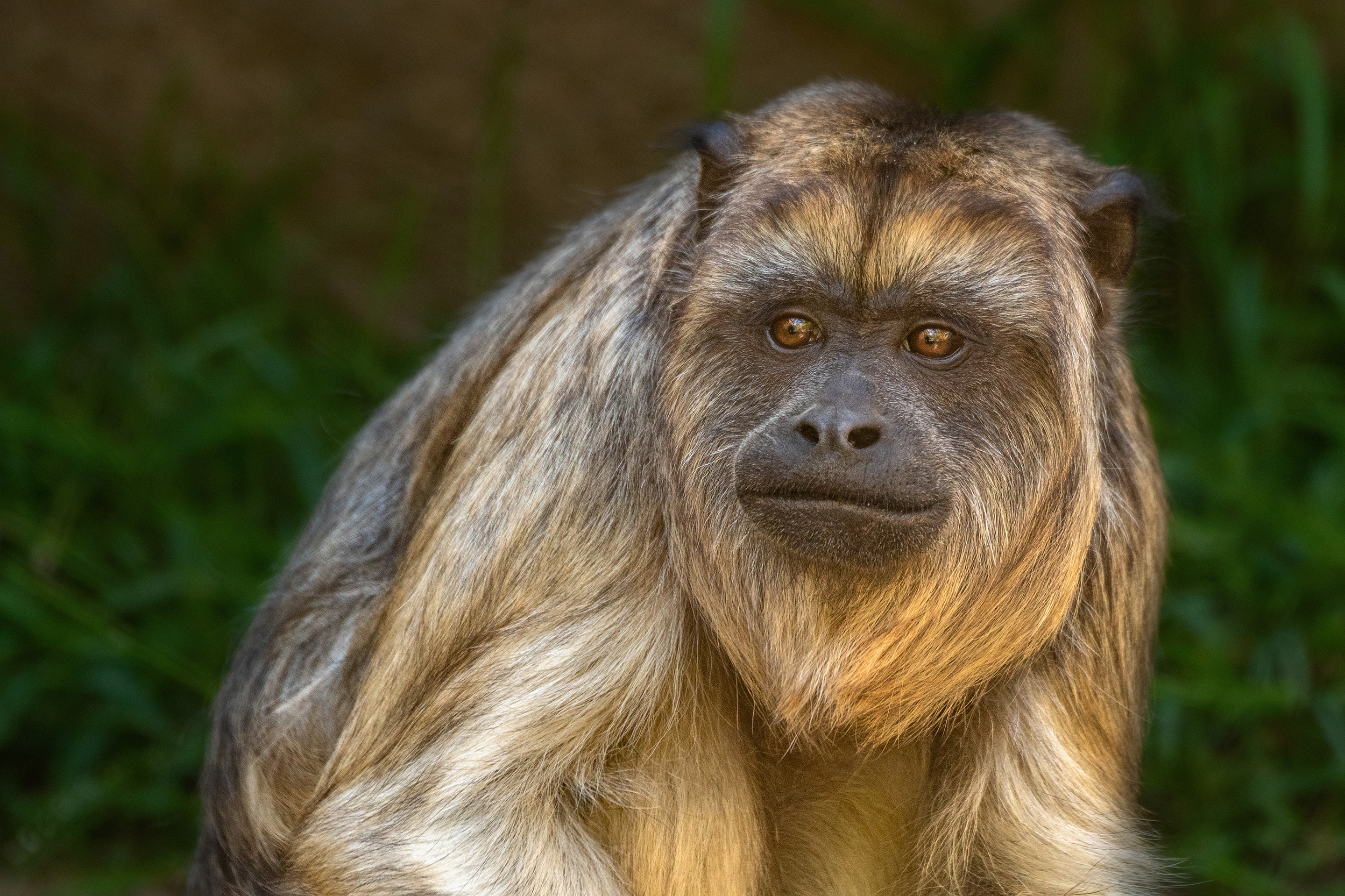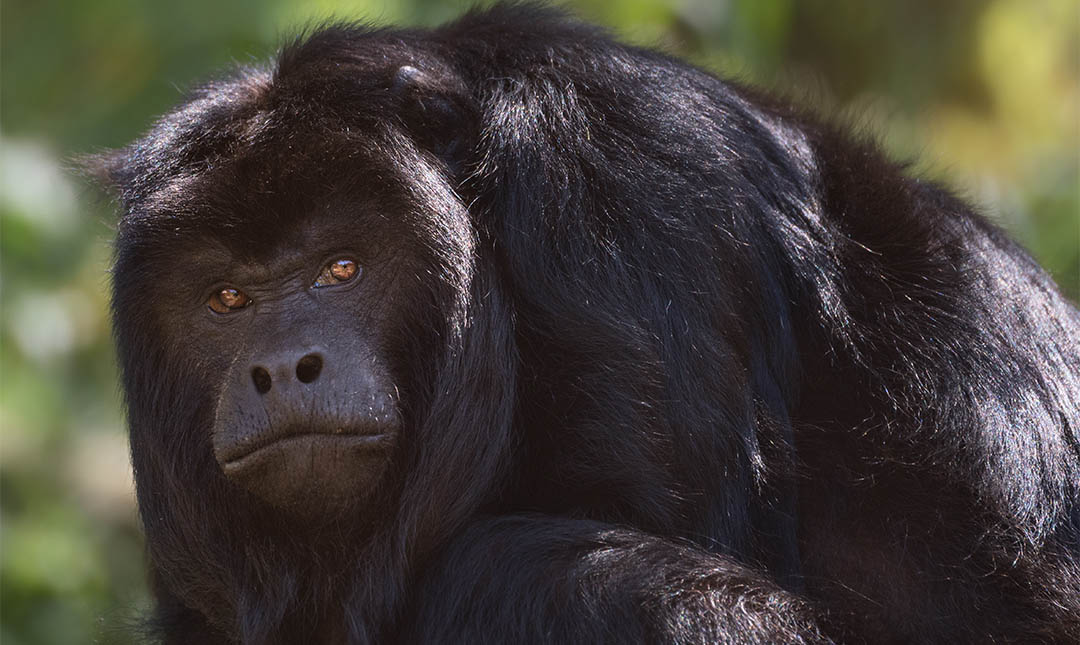About
Known for their haunting, lion-like roars, black howler monkeys are considered the loudest land animal in the world. Their calls can be heard up to three miles away and can reach 140 decibels. (A jet engine at takeoff is about 150 decibels—loud enough to rupture eardrums.) These monkeys howl to establish their territories and howling sessions can begin at sunrise and last more than an hour. Neighboring troops howl back and forth to declare their locations, allowing them to avoid each other. Family groups are small, with up to eight members. Howler monkeys have prehensile tails, which means they can be used like an extra limb to grasp branches and pick up objects. A naked patch under the tip of the tail has ridges and grooves that are unique to each monkey and allow for a strong grip.


Habitat
Black howler monkeys live in the middle and upper parts of the tree canopies in the forests of central South America.
Diet
In addition to the leaves that make up most of their diet, these herbivores also eat figs, plums, buds, flowers, nuts, and leaves. Leaves are not very energy-dense, so howlers spend up to 70 percent of their time resting on branches with their limbs dangling.
Physical Characteristics
If you encounter a troop of black howlers in a zoo or in the wild, you might think you are looking at two different species. The species is sexually dimorphic, which means males and females differ in appearance. In addition to males being larger than females, these monkeys are also sexually dichromatic, meaning the sexes are different colors—males are black while females and juveniles are a golden color. Males measure 24 to 26 inches long with a 24- to 26-inch tail. Females’ bodies are slightly shorter at about 20 inches. Weight ranges from 15 to 30 pounds. Their lifespan is 15–20 years.



